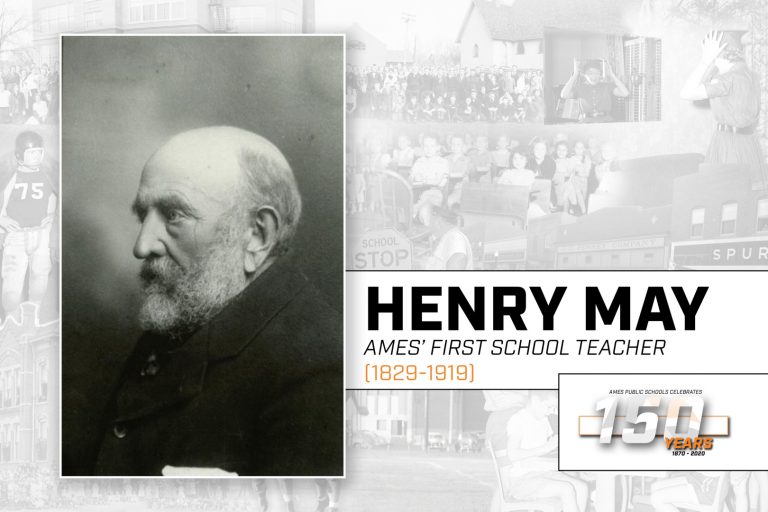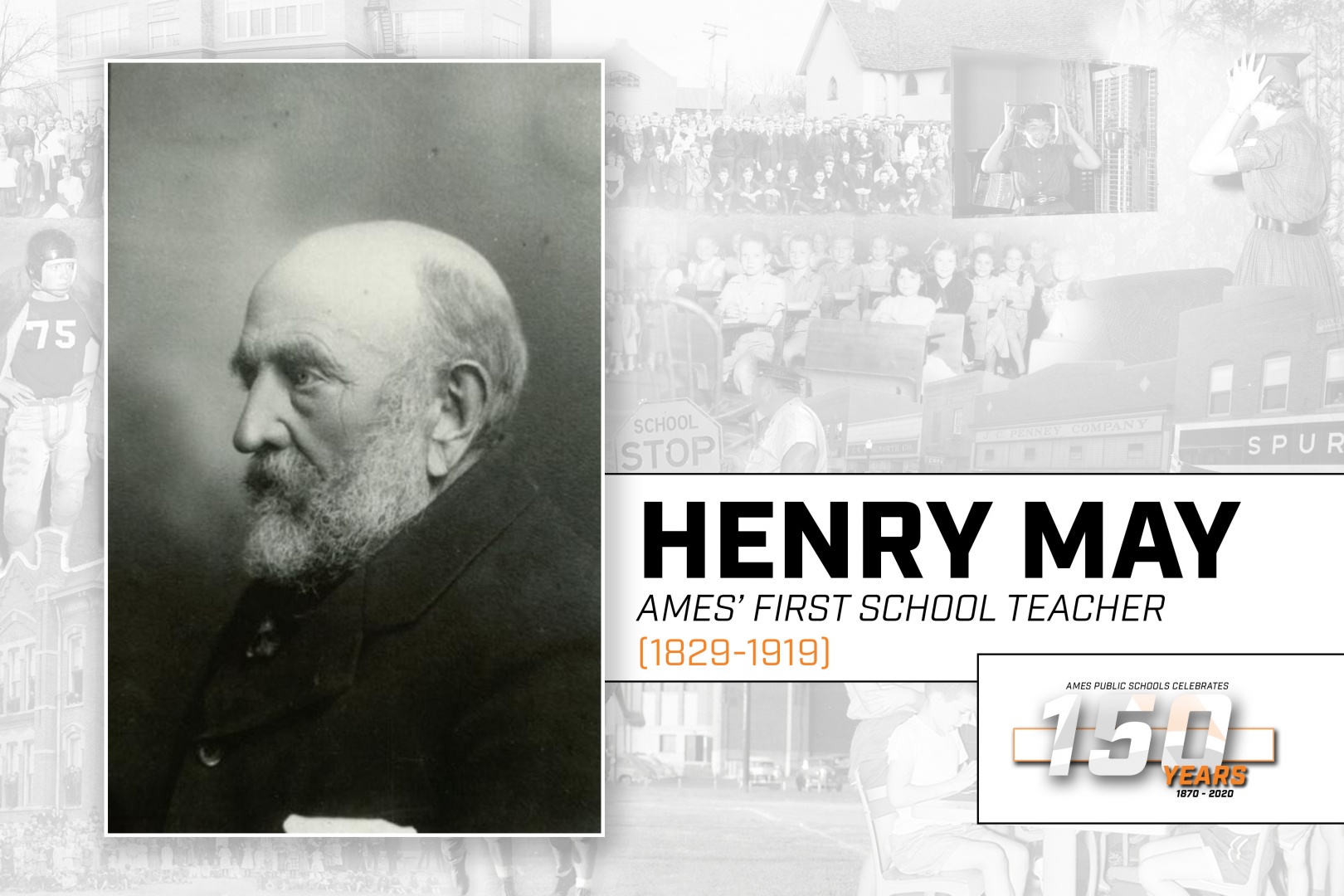

Henry May: Ames’ First School Teacher (1829-1919)

Henry May is known as the first teacher of Ames Schools. Originally from Connecticut, May came to Ames in the spring of 1866 when the population was reported to have been 100. He bought 11.5 acres of bare prairie for $346.20 on the land that is now Mary Greeley Medical Center between 9th and 13th Streets and Douglas and Duff Avenues. He built one of the first houses in the area.
His contribution to the Ames community started in 1867 when an official school district was organized in the Ames area and he was selected as the schoolmaster to teach at the first school in Ames, Hoggatt School. May was selected as the schoolmaster because he was widely viewed as the most educated person in the area, holding advanced degrees and hailing from the east. Upon his death in 1919, May was described in the Ames Evening Times as “one of the most brilliant men that ever lived in Ames… an avid reader with the intelligence and ability to judge men and measures.”
Before coming to the midwest, May was an active participant in politics and was appointed by the Lincoln administration to the post of United States Commercial Agent in Gaboon West Africa. He kept that post during most of the Civil War from 1861-1864. While in Africa, he engaged in many adventures, including one that involved the famed British explorer Sir Richard Francis Burton. He also played a role in sending the first consignment of Calabar beans to the United States, an ingredient used in the drug to treat glaucoma. During his last year of service, he contracted the black plague, an illness that stayed with him for the rest of his life. The treatment of brandy and quinine resulted in additional addiction complications for May, and he moved to Iowa in hopes that the rural setting would be a healthier option.
May served the Ames School system for three terms as a teacher and then additionally as schoolmaster and secretary to the first school board. He moved away to operate a drug store and hotel business for some time, but Ames called him back in 1889. Upon returning, May worked as a milk delivery driver before becoming the first rural mail carrier for Ames. He kept that job into his 80’s, despite suffering a broken hip when he was thrown from his wagon. May remained in Ames until his death in 1919 where he was buried next to his wife in an unmarked grave. In 1984, thanks in part to immaculate cemetery records, his grave was found, honored, and marked as befitting a man who contributed so much to Ames’ early days.
